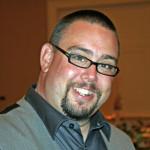“If a man has lost a leg or an eye, he knows he has lost a leg or an eye; but if he has lost a self – himself – he cannot know it, because he is no longer there to know it.”
In his most extraordinary book, “one of the great clinical writers of the twentieth century” (The New York Times) recounts the case histories of patients lost in the bizarre, apparently inescapable world of neurological disorders.
Oliver Sacks’s The Man Who Mistook His Wife for a Hat tells the stories of individuals afflicted with fantastic perceptual and intellectual aberrations: patients who have lost their memories and with them the greater part of their pasts; who are no longer able to recognize people and common objects; who are stricken with violent tics and grimaces or who shout involuntary obscenities; whose limbs have become alien; who have been dismissed as retarded yet are gifted with uncanny artistic or mathematical talents.
If inconceivably strange, these brilliant tales remain, in Dr. Sacks’s splendid and sympathetic telling, deeply human. They are studies of life struggling against incredible adversity, and they enable us to enter the world of the neurologically impaired, to imagine with our hearts what it must be to live and feel as they do. A great healer, Sacks never loses sight of medicine’s ultimate responsibility: “the suffering, afflicted, fighting human subject.” [From: Goodreads.com]
The title of the book comes from the case study of a man with visual agnosia. The Man Who Mistook His Wife for a Hat became the basis of an opera of the same name by Michael Nyman, which premiered in 1986.
“For here is a man who, in some sense, is desperate, in a frenzy. The world keeps disappearing, losing meaning, vanishing – and he must seek meaning, make meaning, in a desperate way, continually inventing, throwing bridges of meaning over abysses of meaninglessness, the chaos that yawns continually beneath him.”
The book comprises twenty-four essays split into four sections which each deal with a particular aspect of brain function such as deficits and excesses in the first two sections (with particular emphasis on the right hemisphere of the brain) while the third and fourth describe phenomenological manifestations with reference to spontaneous reminiscences, altered perceptions, and extraordinary qualities of mind found in mentally handicapped people. [From: Wikipedia.com]
Oliver Sacks is a professor of clinical neurology who has spent years seeing patients. He has compiled some of his more interesting, more personal stories into one volume to share with the world. His goal in writing the book is to present the personal side of neurosis. Often books of this sort are written as a series of case studies full of medical terminology that leaves the average reader frustrated and unwilling to finish the book. Sacks mixes his clinical jargon with a personal empathy for his patients, drawing the reader in and allowing even the most inexperienced reader to gain a better understanding of the lives of the mentally disabled.
Sacks divides his book into four separate but somewhat intertwining parts. Just as many neurological diseases are not mutually exclusive, neither are the stories Sacks compiles. In each section, Sacks highlights several stories of patients suffering from a disease corresponding to the section heading. There are stories of mental losses, mental excesses, mental transports, and the world of the simple.
In the section focusing on losses, the reader is introduced to several interesting people who suffer similar disorders and each cope with their imposed lifestyle in a different way. Dr. P. is able to continue living his life nearly as normally as before the onset of his disease. In fact he is able to adapt his lifestyle to include his disease in a manner that benefits him and his interests. Jimmie G. on the other hand is lost in a world of the past and will never be able to catch up with those around him. For Jimmie G. the world stands still in 1945 and all attempts to bring him up-to-date cause frustration for both him and his doctors. Christina is trying to live a normal life but when she suddenly finds herself without a body she is forced to face herself and her problems. These are just a few of the people the reader finds in Part One and the reader discovers just how quickly and inexplicably a life can change.
Part Two features patients with excesses. Witty Ticcy Ray is possibly the most memorable person from this section. Ray suffers from Tourette’s syndrome but suffers is not quite the right word when discussing Ray. Ray has been able to use his syndrome to his advantage in several arenas. He is an excellent drummer because he is prone to lash out into a wild solo and he is wildly entertaining because of his offbeat wit. However, Ray does need some help harnessing his syndrome in order to function reasonably at home and avoid losing his family.
“The miracle is that, in most cases, he succeeds – for the powers of survival, of the will to survive, and to survive as a unique inalienable individual, are absolutely, the strongest in our being: stronger than any impulses, stronger than disease.”
Part Three discusses people with transports. This concept is a little difficult to grasp at first. Although Sacks gives a lengthy description of transports at the start of the section, it is not until the reader reaches the stories of Mrs. O’ C. and Bhagawhandi that a glimmer of understanding lights up. Mrs. O’ C. hears music in her head—Irish music. The music transports her back to a time in her childhood she thought was lost forever. She is able to warmly remember a mother she barely knew and finds a piece of herself finally restored. Bhagawhandi suffers from an inoperable brain tumor but instead of becoming discouraged that her life will end earlier than it should, she finds comfort in the images that eventually overwhelm her. These images transport Bhagawhandi back to her native India even though she is physically unable to make the trip home.
Part Four is perhaps the most moving and interesting section of the entire book. It is almost sad Sacks chose to leave it until the end, except that if he had placed this section first, the reader might have been disappointed by the lackluster stories of the other three sections. Each story in this section focuses on what Sacks terms “a retardate.” These patients are considered “simple” by the medical and social worlds but Sacks brings out their individuality and personal strengths. These stories truly are “stories” and the reader becomes quickly immersed in the lives of these extraordinary patients. [From: Bookrags.com]
Here Dr. Sacks recounts the case histories of patients lost in the bizarre, apparently inescapable world of neurological disorders: people afflicted with fantastic perceptual and intellectual aberrations; patients who have lost their memories and with them the greater part of their pasts; who are no longer able to recognize people and common objects; who are stricken with violent tics and grimaces or who shout involuntary obscenities; whose limbs have become alien; who have been dismissed as retarded yet are gifted with uncanny artistic or mathematical talents.
If inconceivably strange, these brilliant tales remain, in Dr. Sacks’s splendid and sympathetic telling, deeply human. They are studies of life struggling against incredible adversity, and they enable us to enter the world of the neurologically impaired, to imagine with our hearts what it must be to live and feel as they do. [From: Oliversacks.com]
A neurologist who claims to be equally interested in disease and people, Sacks (Awakenings, etc.) explores neurological disorders with a novelist’s skill and an appreciation of his patients as human beings. These cases, some of which have appeared in literary or medical publications, illustrate the tragedy of losing neurological faculties, memory, powers of visualization, word-recognition or the also devastating fate of those suffering an excess of neurological functions causing such hyper states as chorea, tics, Tourette’s syndrome and Parkinsonism. Still other patients experience organically based hallucinations, transports, visions, etc., usually deemed to be psychic in nature. The science of neurology, Sacks charges, stresses the abstract and computerized at the expense of judgment and emotional depths in his view, the most important human qualities. Therapy for brain-damaged patients (by medication, accommodation, music or art) should, he asserts, be designed to help restore the essentially personal quality of the individual. [From: Publishersweekly.com]
“To be ourselves we must have ourselves – possess, if need be re-possess, our life-stories. We must “recollect” ourselves, recollect the inner drama, the narrative, of ourselves. A man needs such a narrative, a continuous inner narrative, to maintain his identity, his self.”
If you enjoy medical case histories that are sensitive yet lively, weird but informative, then Sacks’ book is your ticket. A neurologist who writes with wit and zest, he will fascinate you with stories of patients like the man in the title – a professor who couldn’t recognize faces and who patted the tops of fire hydrants believing them to be children. Nietschze asked whether we could do without disease in our lives and the author explores this interesting concept with a rare and invigorating philosophic sense. Sacks is no ordinary practitioner; his patients suffer from rare complaints like Korshakov’s syndrome, Tourette’s and other afflictions, some of which make the patient unsure of the reality of his own body. Their tragedies and their courage are joined with the author’s astute professionalism and humanity to make for a riveting foray into the unknown. The history of these strange cases and the state of the art of medicine are deftly probed. Yet in the midst of all this tragedy, there is an eerie comic quality. Take the 80-year-old ex-prostitute who discovers a new liveliness and euphoria, which she enjoys immensely. However, the reason for this is a recurrence of an old syphilis infection. Does she want to be totally cured and lose this new found ebullience? Not really. She relishes “Cupid’s disease’s” strange excitation of her cerebral cortex too much. To Sacks’ credit, he agrees with her. This book ranks with the very best of its genre. It will inform and entertain anyone, especially those who find medicine an intriguing and mysterious art. [From: Kirkusreviews.com]
“If we wish to know about a man, we ask ‘what is his story – his real, inmost story?’ – for each of us is a biography, a story. Each of us is a singular narrative, which is constructed, continually, unconsciously, by, through, and in us – through our perceptions, our feelings, our thoughts, our actions; and, not least, our discourse, our spoken narrations. Biologically, physiologically, we are not so different from each other; historically, as narratives – we are each of us unique.”
“Very young children love and demand stories, and can understand complex matters presented as stories, when their powers of comprehending general concepts, paradigms, are almost nonexistent.”
Sacks was the youngest of four children born to a prosperous North London Jewish couple: Sam, a physician, and Elsie, a surgeon. When he was six years old, he and his brother were evacuated from London to escape The Blitz, retreating to a boarding school in the Midlands, where he remained until 1943. During his youth, he was a keen amateur chemist, as recalled in his memoir Uncle Tungsten. He also learned to share his parents’ enthusiasm for medicine and entered The Queen’s College, Oxford University in 1951, from which he received a Bachelor of Arts (BA) in physiology and biology in 1954. At the same institution, he went on to earn in 1958, a Master of Arts (MA) and an MB ChB in chemistry, thereby qualifying to practice medicine.
After converting his British qualifications to American recognition (i.e., an MD as opposed to MB ChB), Sacks moved to New York, where he has lived since 1965, and taken twice weekly therapy sessions since 1966.
Sacks began consulting at chronic care facility Beth Abraham Hospital (now Beth Abraham Health Service) in 1966. At Beth Abraham, Sacks worked with a group of survivors of the 1920s sleeping sickness, encephalitis lethargica, who had been unable to move on their own for decades. These patients and his treatment of them were the basis of Sacks’ book Awakenings.
His work at Beth Abraham helped provide the foundation on which the Institute for Music and Neurologic Function (IMNF), where Sacks is currently an honorary medical advisor, is built. In 2000, IMNF honored Sacks, its founder, with its first Music Has Power Award. The IMNF again bestowed a Music Has Power Award on Sacks in 2006 to commemorate “his 40 years at Beth Abraham and honor his outstanding contributions in support of music therapy and the effect of music on the human brain and mind”.
Sacks was formerly employed as a clinical professor of neurology at the Albert Einstein College of Medicine and at the New York University School of Medicine, serving the latter school for 42 years. On 1 July 2007, Columbia University College of Physicians and Surgeons appointed Sacks to a position as professor of clinical neurology and clinical psychiatry, at the same time opening to him a new position as “artist”, which the university hoped will help interconnect disciplines such as medicine, law, and economics. Sacks remains a consultant neurologist to the Little Sisters of the Poor, and maintains a practice in New York City.
Since 1996, Sacks is a member of The American Academy of Arts and Letters (Literature). In 1999, Sacks became a Fellow of the New York Academy of Sciences. Also in 1999, he became an Honorary Fellow at The Queen’s College, Oxford. In 2002, he became Fellow of the American Academy of Arts and Sciences (Class IV—Humanities and Arts, Section 4—Literature).[38] and he was awarded the 2001 Lewis Thomas Prize by Rockefeller University. Sacks has been awarded honorary doctorates from the College of Staten Island (1991), Tufts University (1991), New York Medical College (1991), Georgetown University (1992), Medical College of Pennsylvania (1992), Bard College (1992), Queen’s University (Ontario) (2001), Gallaudet University (2005), University of Oxford (2005), Pontificia Universidad Católica del Perú (2006). He was appointed Commander of the Order of the British Empire (CBE) in the 2008 Birthday Honours. Asteroid 84928 Oliversacks, discovered in 2003 and 2 miles (3.2 km) in diameter, has been named in his honor. [From: Goodreads.com]
Now Watch This Video:
The Man Who Mistook His Wife For A Hat, and Other Clinical Tales ; TIME 18:45 minutes
If you like this story, CLICK HERE to join the tribe of success-minded people just like you. You will love our weekly quick summaries of top stories, talks, books, movies, music and more with handy downloadable guides, cheat sheets, cliffs notes and quote books.














